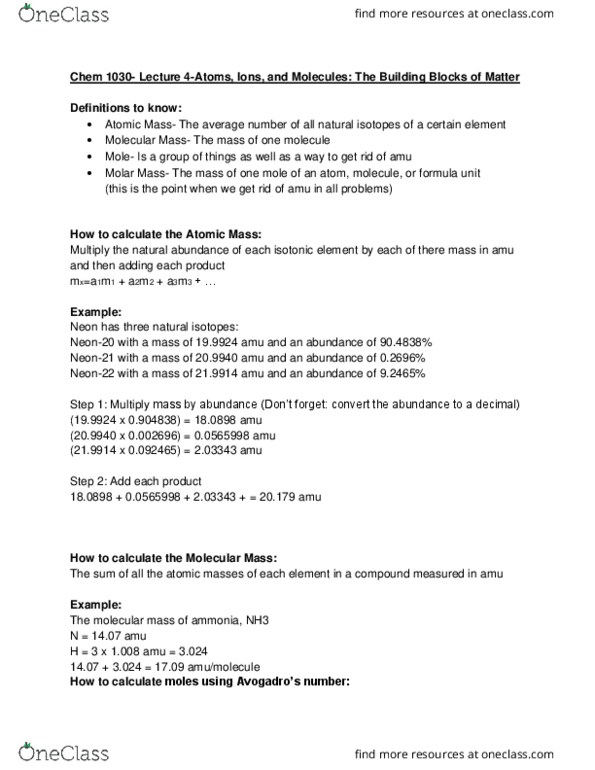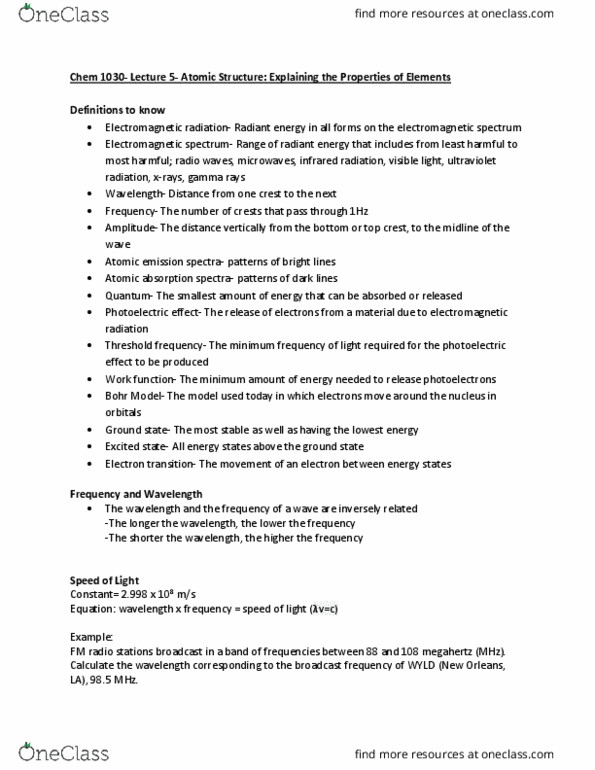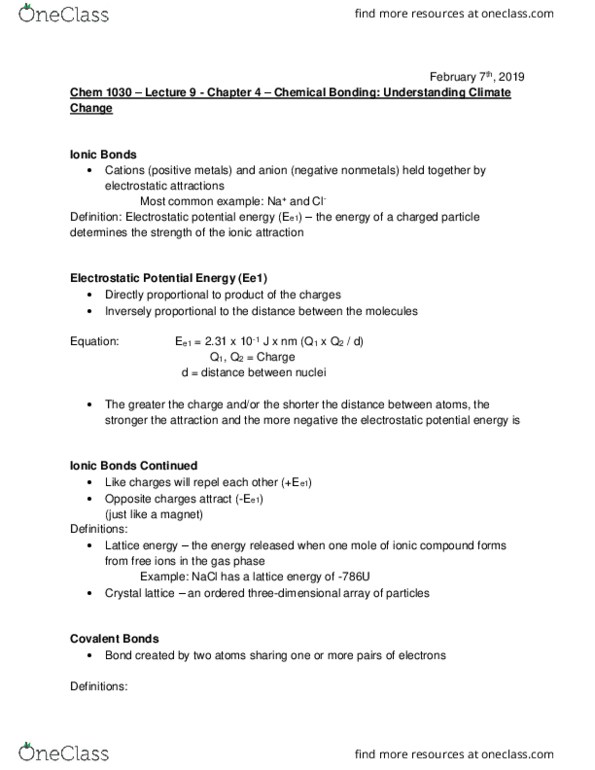CHEM 1030 Lecture 9: Chapter 4- Chemical Bonding: Understanding Climate Change
CHEM 1030 verified notes
9/9View all
Document Summary
Chem 1030 lecture 9 - chapter 4 chemical bonding: understanding climate. Ionic bonds: cations (positive metals) and anion (negative nonmetals) held together by. Definition: electrostatic potential energy (ee1) the energy of a charged particle determines the strength of the ionic attraction. Electrostatic potential energy (ee1: directly proportional to product of the charges. Inversely proportional to the distance between the molecules. Ee1 = 2. 31 x 10-1 j x nm (q1 x q2 / d) d = distance between nuclei. Q1, q2 = charge: the greater the charge and/or the shorter the distance between atoms, the stronger the attraction and the more negative the electrostatic potential energy is. Ionic bonds continued: like charges will repel each other (+ee1, opposite charges attract (-ee1) (just like a magnet) Definitions: lattice energy the energy released when one mole of ionic compound forms from free ions in the gas phase. Example: nacl has a lattice energy of -786u: crystal lattice an ordered three-dimensional array of particles.




